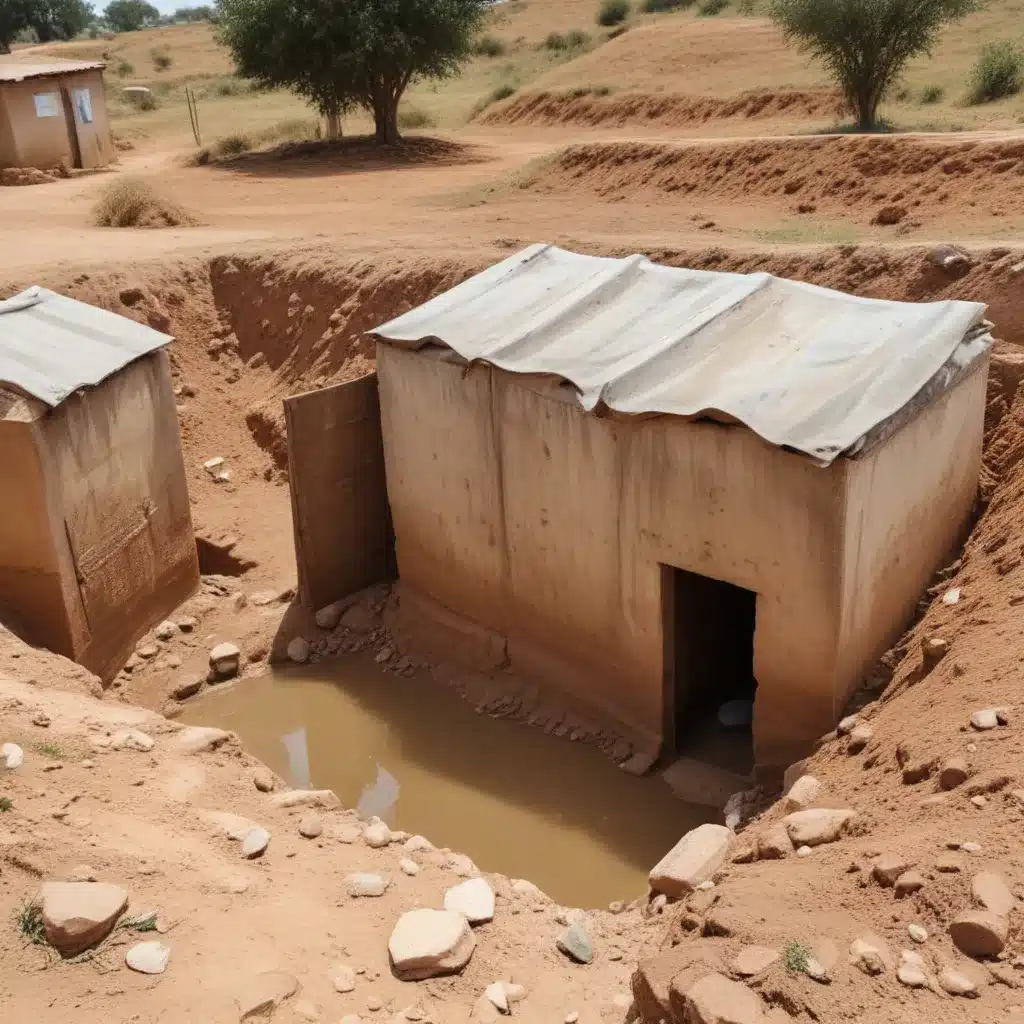
The Importance of Latrine Quality in Improving Health Outcomes
Disposing of human excreta safely is a fundamental requirement for improving human health and quality of life. Pit latrines are the most common form of sanitation in many low- and middle-income countries, serving over 3.8 billion people globally. However, the relationship between latrine design and health outcomes has not been thoroughly assessed.
Inadequate pit latrines can actually contribute to the transmission of diseases if they are poorly constructed. Many sanitation programs focus solely on increasing latrine coverage without sufficient emphasis on the minimum standard required to effectively interrupt fecal-oral disease pathways. As a result, some communities have ended up with “fixed-point open defecation” where excreta is collected in one place but remains accessible to animals and flies.
This study compared the performance of well-constructed and poorly constructed pit latrines in reducing child diarrhea. It also explored whether having a well-designed household latrine can provide indirect “herd protection” to neighboring households if the community-level coverage reaches a certain threshold.
Defining an “Improved” Pit Latrine
For this study, a “study-improved latrine” was defined as having all of the following characteristics:
- Pit depth of 2 meters or more
- Slab of any material
- Drop-hole cover
- Wall
- Roof
- Door
- Handwashing facilities with water and soap observed
Latrines missing one or more of these features were classified as “study-unimproved.”
The researchers also analyzed latrine performance based on the World Health Organization/UNICEF Joint Monitoring Program (JMP) definition of an “improved latrine,” which is a pit latrine with a slab.
Better Latrines, Better Health Outcomes
The study found that children living in households with a study-improved latrine had 54% lower odds of contracting diarrhea compared to those in households with a study-unimproved latrine. The odds of diarrhea were not significantly different between households with a JMP-improved latrine and those with a JMP-unimproved latrine.
“U5C in households with a study-improved latrine had 54% lower odds of contracting diarrhea than those living in households with a latrine missing 1 or more of the characteristics.”
Further analysis revealed that study-improved latrines had significantly lower odds of feces or flies present around the pit hole compared to study-unimproved latrines. This suggests the health benefits of well-constructed latrines are not solely due to increased latrine usage, but also by reducing direct and indirect fecal contamination.
Herd Protection from Community-Level Coverage
The study also explored whether high community-level coverage of improved latrines could provide “herd protection” to households without a latrine or with a poorly constructed one.
In villages where 50% or more of households had study-improved latrines and 70% or more had JMP-improved latrines, children living in households without a latrine or with a study-unimproved latrine were 45% less likely to contract diarrhea compared to their counterparts in low-coverage villages.
“Of U5C living in households without a latrine or with a study-unimproved latrine, those in the high-coverage villages were less likely to contract diarrhea than those in low-coverage villages (aOR=0.55; 95% CI=0.35, 0.86; P=.008).”
This herd protection effect suggests that achieving universal coverage of well-designed latrines can have spillover benefits, even for those who do not directly have access to an improved facility.
Implications for Policy and Practice
This research highlights several important insights for policymakers and sanitation program implementers:
-
Move Beyond Binary “Improved” Definitions: Evaluating latrines using a binary “improved” versus “unimproved” framework may mask important differences in latrine design and functionality. Programs should measure and compare multiple latrine characteristics to understand which features are most important for disrupting disease transmission.
-
Prioritize Latrine Quality, Not Just Coverage: Many sanitation interventions, especially those involving community-led approaches, have emphasized increasing latrine coverage without sufficient focus on latrine quality. This study shows the critical importance of ensuring latrines are well-constructed to maximize health benefits.
-
Pursue Universal, High-Quality Coverage: Achieving herd protection requires reaching high community-level coverage (50% or more) of latrines that meet an “improved” standard. Policymakers should advocate for universal access to high-quality sanitation services to confer these indirect health benefits.
-
Integrate Water, Sanitation, and Hygiene (WASH): The study was unable to fully account for the role of water quality and handwashing practices, which are crucial components of the WASH framework. Integrating these elements is essential for maximizing the health impact of sanitation interventions.
Investing in well-designed, universally accessible pit latrines has the potential to significantly reduce the burden of diarrheal and other fecal-oral diseases. This study provides important evidence to guide sanitation policies and programs towards achieving lasting health improvements for the poorest and most vulnerable communities.
Conclusion
Proper disposal of human excreta is critical for improving health, but simply increasing latrine coverage is not enough. This study demonstrates the importance of ensuring pit latrines are well-constructed, with features like adequate pit depth, slab, and handwashing facilities.
Well-designed latrines not only reduced diarrhea risk for individual households, but also provided herd protection to surrounding community members when coverage was high. Policymakers and practitioners should prioritize latrine quality, not just quantity, to maximize the health and social benefits of sanitation interventions.
Integrating water, sanitation, and hygiene components is essential for a comprehensive approach to improving WASH services and outcomes. By pursuing universal access to high-quality sanitation, we can make significant strides in reducing the burden of infectious diseases and improving quality of life for the world’s most vulnerable populations.

